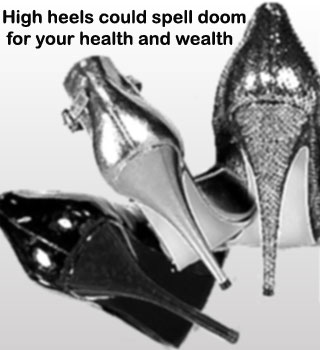
“While we love our high heels, wearing them for prolonged periods is bad news for our health and wallets. We need to mix and match our choice of footwear to allow our bodies time to recover. Heaven forbid that we ban heels from our wardrobes but we want to balance out our heel wearing days, protect our bodies from future damage and avoid injuriesâ€, reveals NHS consultant podiatrist Emma Supple
She further adds, “Bunions and corns can be incredibly painful, not to mention unsightly. Although operations to reverse them are available on the NHS, waiting lists can be long. By opting for private treatment, women can be pain free sooner and, more importantly, avoid long-term health problems.â€
The unique study was carried out by a shoe brand MBT and included nearly 1000 women. Nearly half of the women in Liverpool and Manchester wear heels all week long. It claims that while common operations like bunion and corn removal can each cost £4,000 that adds up to £13.8m a year, more complex operations like toe straightening costs around £1,200 per operation which adds up to £10.4m in a year.
In addition to this, the study indicates that nearly £3.3million a year is spent on big toe joint replacement, £2million on removing trapped nerves and £200,000 correcting in growing toenails. The problems due to high heels included mostly twisted ankles with four in ten women having accidents in heels. The trend these days is also towards cosmetic surgery on the feet with treatments like plumping the ball of the foot with a dermal filler to give more cushioning.
If we go by experts at the Society of Chiropodists and Podiatrists, stilettos force the wearer to raise their heel and hence the lower back bends to compensate. This in turn pressurizes the nerves in the back and can cause sciatica along with another common problem namely damage to the Achilles tendon.
The study advises women to stick to heels no more than one and half inches.
Well we’d say – Women, there are better ways of standing tall and out in the crowd.
